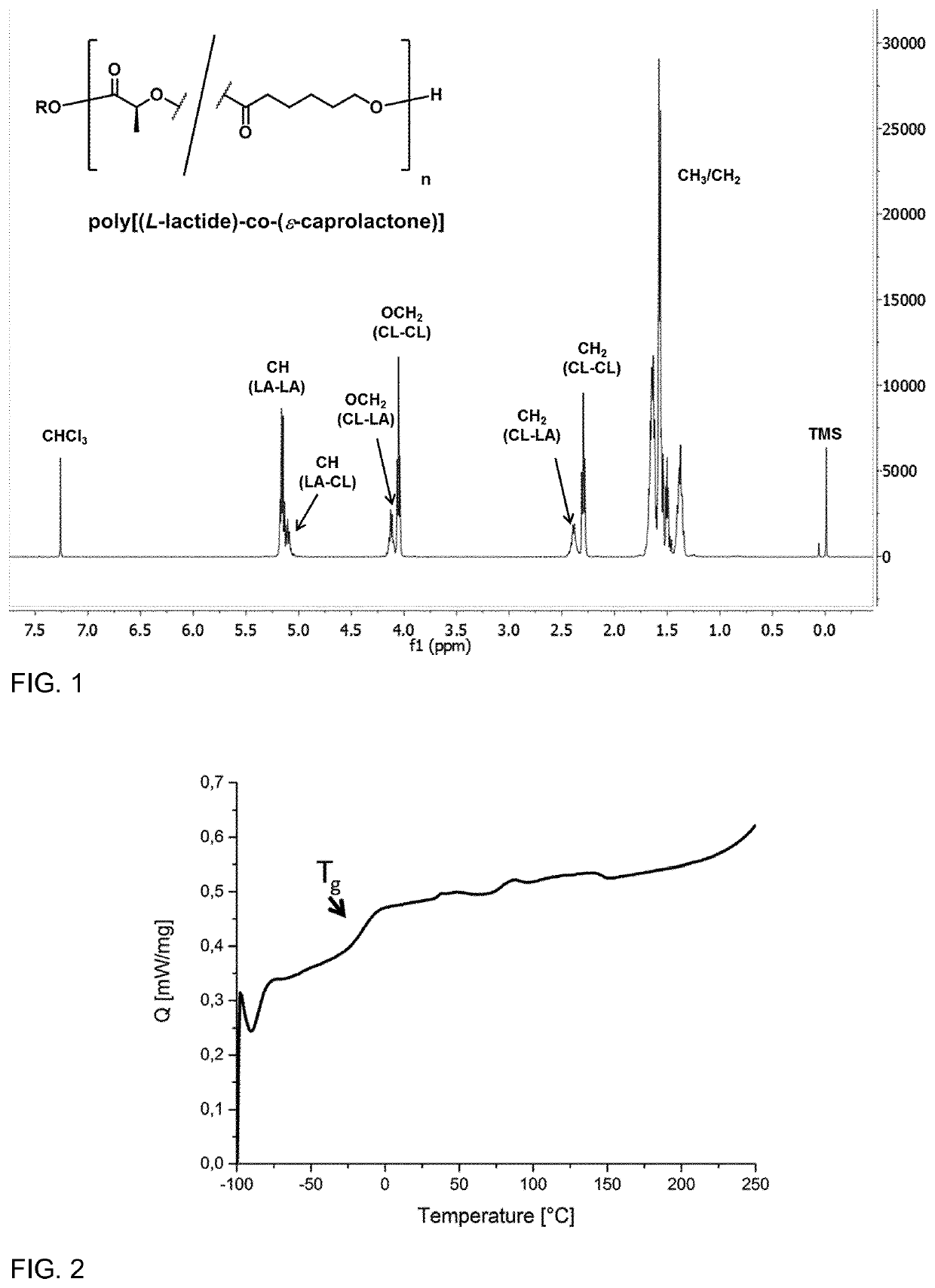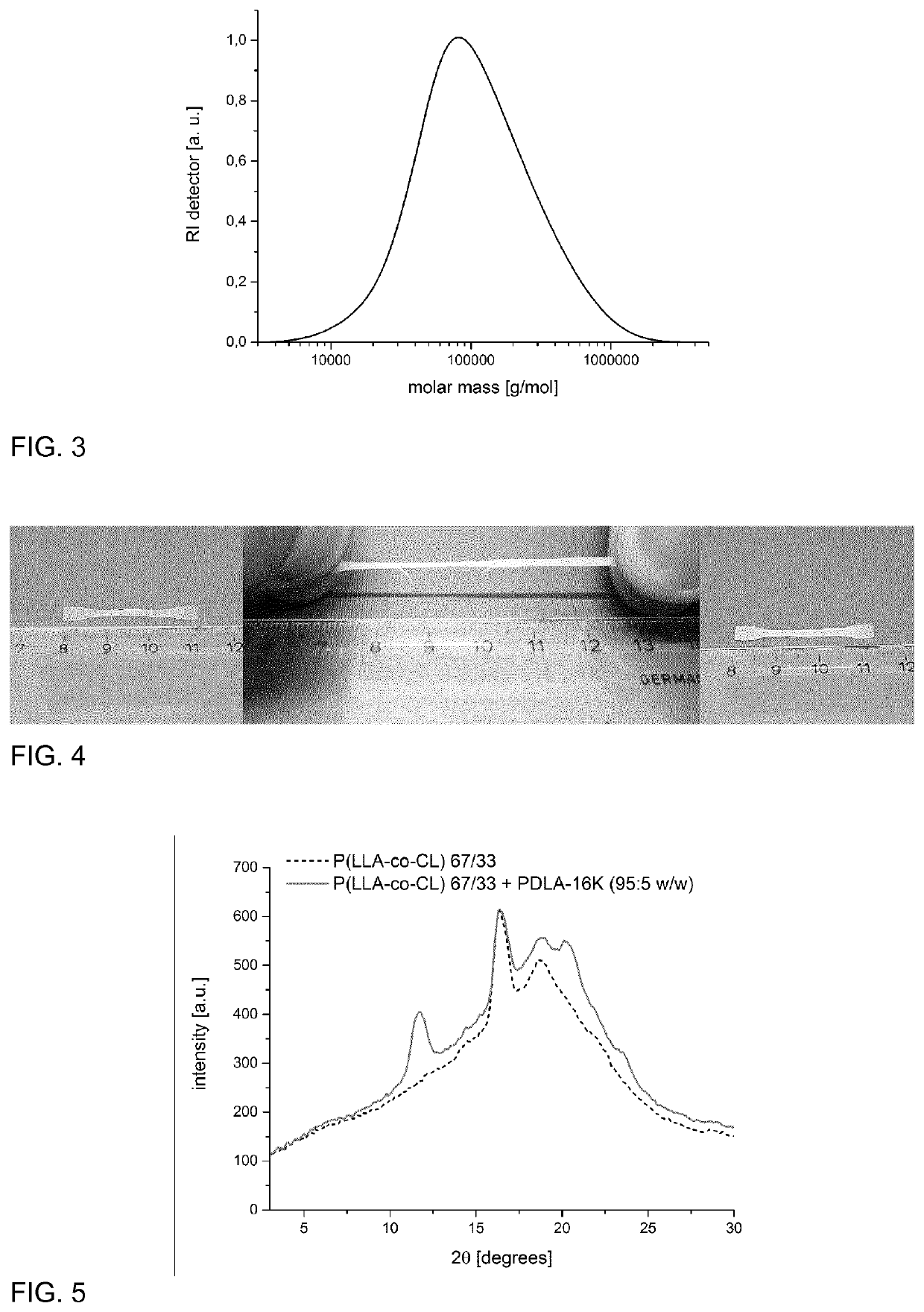Highly elastic lactide-based polymer blend, object made from the polymer blend and method of producing the object
a lactide-based polymer and high-elasticity technology, applied in the direction of monocomponent polyester artificial filaments, filament/thread forming, fibre treatment, etc., can solve the problems of hydrolysis degradation, significant creep in materials, and the inability of rubber to hydrolyze, etc., to achieve high elasticity, easy and cost-effective way, and high degree of shape stability
- Summary
- Abstract
- Description
- Claims
- Application Information
AI Technical Summary
Benefits of technology
Problems solved by technology
Method used
Image
Examples
working examples
Synthesis of First Polymer Component (A)
[0104]The synthesis of the copolymer component was performed by tin(II) 2-ethylhexanoate (Sn(oct)2) catalyzed ring-opening polymerization of a mixture of ε-caprolactone and L,L-dilactide (or D,D-dilactide) in the melt. The synthesis was done using different comonomer ratios (LA:CLsyn,m) as indicated in Table 1.
[0105]A typical protocol for the synthesis is as follows: A 500 mL flame-dried three-neck-flask (equipped with magnetic stirring rod, rubber septum, PTFE valve and glass stopper) under argon atmosphere was loaded with L,L-dilactide (60.0 g, 416.3 mmol) (or D,D-dilactide, respectively) and ε-caprolactone (38 mL, 40-41 g, 350-360 mmol), that was purified by distillation. The reaction vessel was placed into a preheated oil bath (140° C.) and the mixture was magnetically stirred until complete melting / dissolution. Then a dilute solution of Sn(oct)2 in anhydrous THF (e.g. 5.1 mL with a concentration of 24.7 mg / mL Sn(oct)2) was added dropwise ...
PUM
| Property | Measurement | Unit |
|---|---|---|
| weight average molecular weight Mw | aaaaa | aaaaa |
| weight average molecular weight Mw | aaaaa | aaaaa |
| elongation at break | aaaaa | aaaaa |
Abstract
Description
Claims
Application Information
 Login to View More
Login to View More - R&D
- Intellectual Property
- Life Sciences
- Materials
- Tech Scout
- Unparalleled Data Quality
- Higher Quality Content
- 60% Fewer Hallucinations
Browse by: Latest US Patents, China's latest patents, Technical Efficacy Thesaurus, Application Domain, Technology Topic, Popular Technical Reports.
© 2025 PatSnap. All rights reserved.Legal|Privacy policy|Modern Slavery Act Transparency Statement|Sitemap|About US| Contact US: help@patsnap.com



